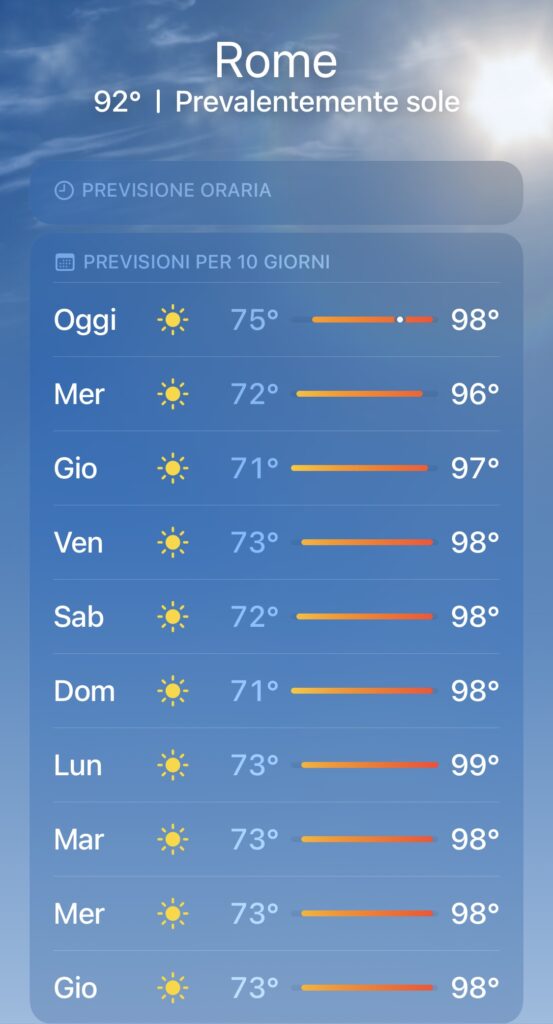
Right now it would be easiest to talk about the blanket of heat that is unwrapped and covering much of Europe. It’s kind of like the big maroon sleeping bag we had as kids; once cocooned inside, both had the impressive ability to retain heat. But when we talk about the high temperatures, the conversation invariably turns to heart-sinking thoughts on climate change. Another summer topic this year would include comparing notes about who is out of the office for reasons other than their holidays. But that of course is really only a conversation centered around the latest variant of COVID. The heat and the cold symptoms. They’re everywhere.
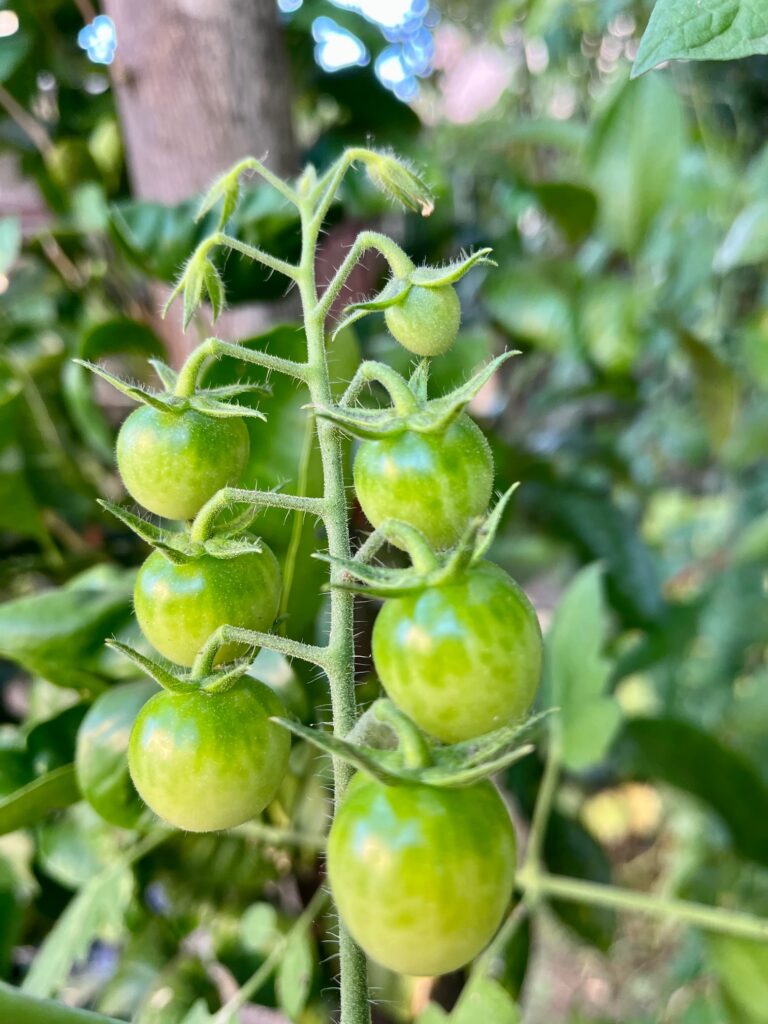
And with that out of the way, I think I’d prefer to focus on a lighter aspect of summertime. And indeed by making this declaration, I am suddenly educating that little kid who used to slide down the house stairs inside of that maroon sleeping bag. The kid who couldn’t understand the appeal in the more simple things that adults enjoyed. When you’re grown and forced to be exposed to all of the ills in the world, it becomes necessary to switch off at regular intervals and let your mind focus on something easy. I get that now. And so today I am considering the tomatoes.
I have several family members who have become keen growers of many things. They tend gardens or various small potted plants for their personal use. I for one am not one of those people who has a gift for gardening, but after witnessing a few growing seasons close up, I understand the appeal. It’s simple, meditative work that cannot be accomplished with the scripting of a bulleted email. You must go step by step, and tend to it just enough and not too much.
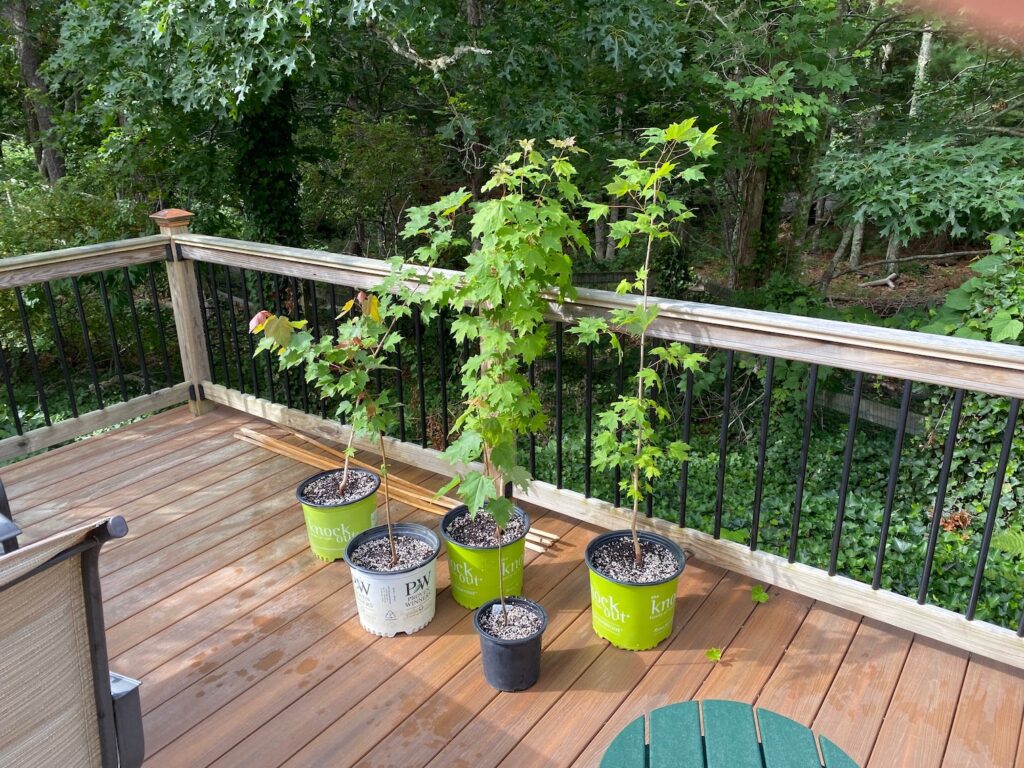
When you first acquire a small sprouting organism — be it a sugar maple sapling or a single tomato plan with a few jagged leaves, it can be hard to imagine what they will become. With the tree, its slow progression tends to become the surprise that suddenly gets your attention after twenty years because what was once shorter than you now provides shade over the house. The tomato plant, in an oddly similar way, sneaks up on you over the course of late spring and early summer weeks. You plant it in the ground next to some stalks and imagine that the garden looks pretty lonely: there are big gaps of spaces but they don’t last long. Soon, climbing and flowering take hold and you’re presented with little room for walking to collect more tomatoes than you ever imagined were possible.
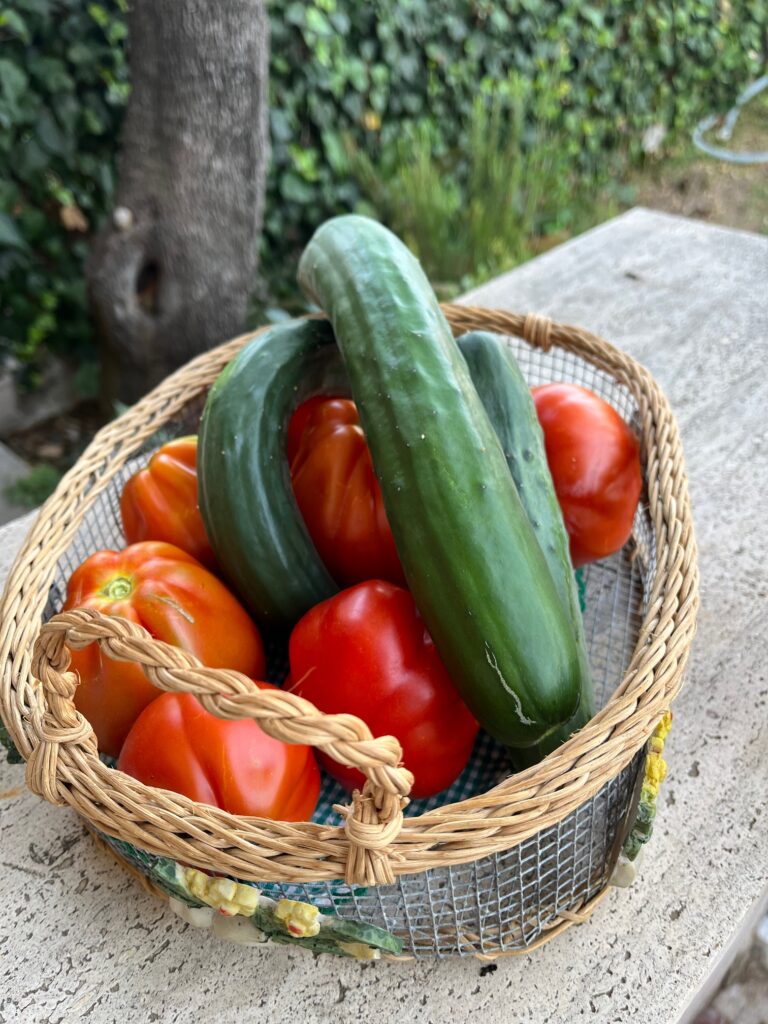
« I’m at the stage where I don’t know what to do with them! Perhaps I will make a bunch of passata. » This was the commentary of an Italian neighbor who recently handed over a basket of large and rippling tomatoes accompanied by two bending cucumbers for good measure. And he’s not the only one picking away at his bumper crop. Everyone’s garden is in high production right now and if it only weren’t so hot and causing some premature harvesting, then I would say that all around it is a wonderful problem to have.
I remember a few years back stopping into a nursery in Rome. A friend of mine was wanting to start an orto (a garden) and I thought it would be fun to tag along. Taking a wide and shallow rolling cart, we wove through the lanes and took in the various herbs, vegetables and large plants on offer. As I looked at the more simple purchases—a neglect-friendly succulent that I thought I could keep alive—he spoke to the workers stocking the garden. I half-listened to their exchange until I heard my friend making some sort of self-deprecating comment about how he was probably asking silly questions about the finer points of growing. That’s when the worker—a seemingly taciturn older guy—suddenly cut him off and corrected him. “This isn’t a silly question at all! A garden is a beautiful thing!” And with that calibration, the cart was filled up and he left with a renewed motivation to start the orto.
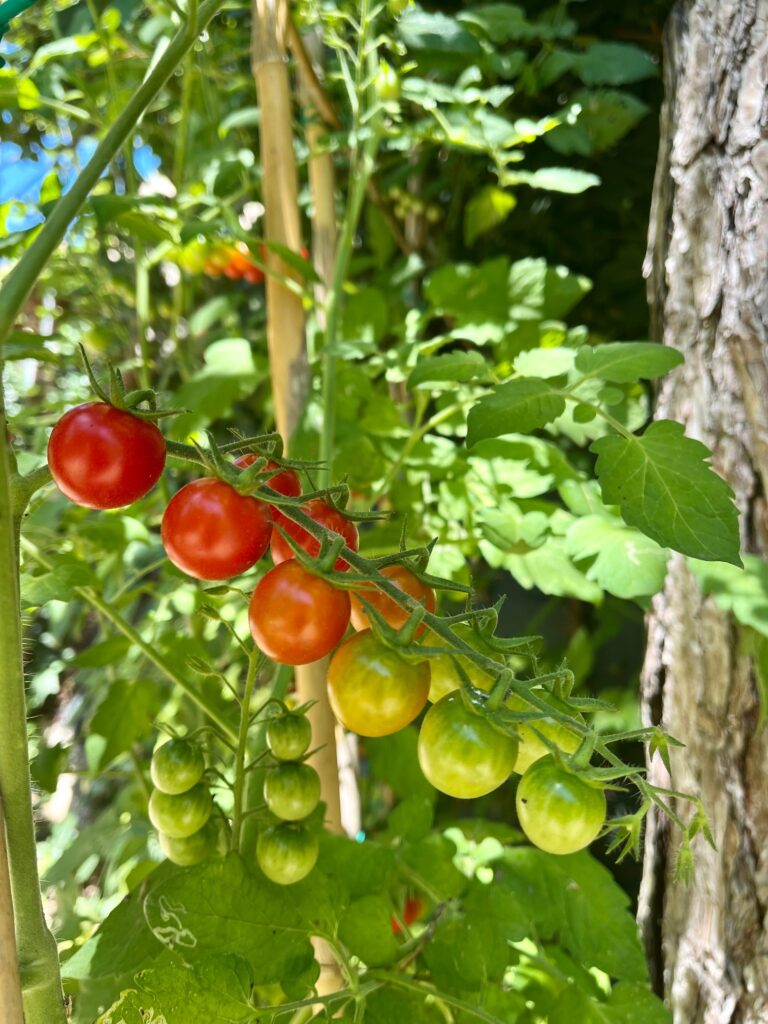
As a fortunate recipient and observer, I do love watching the process of tomatoes at their near peak. It’s like 4th of July fireworks as they are building to the finale. You can see the colors of tomatoes on a single string all in different stages as if they were some kind of suspended xylophone. You know what to pick and when, and right off the vine they will never taste as good as they will at that moment. Baskets and containers of tomatoes become the mandatory accompaniment for every lunch and dinner, and at this point, this repetition is never greeted with any kind of disdain. You grow yourself some basil and, if you’re lucky to be in Italy, you’ve got some mozzarella di bufala on hand. That can be supper or lunch. And then there is not much else you need.
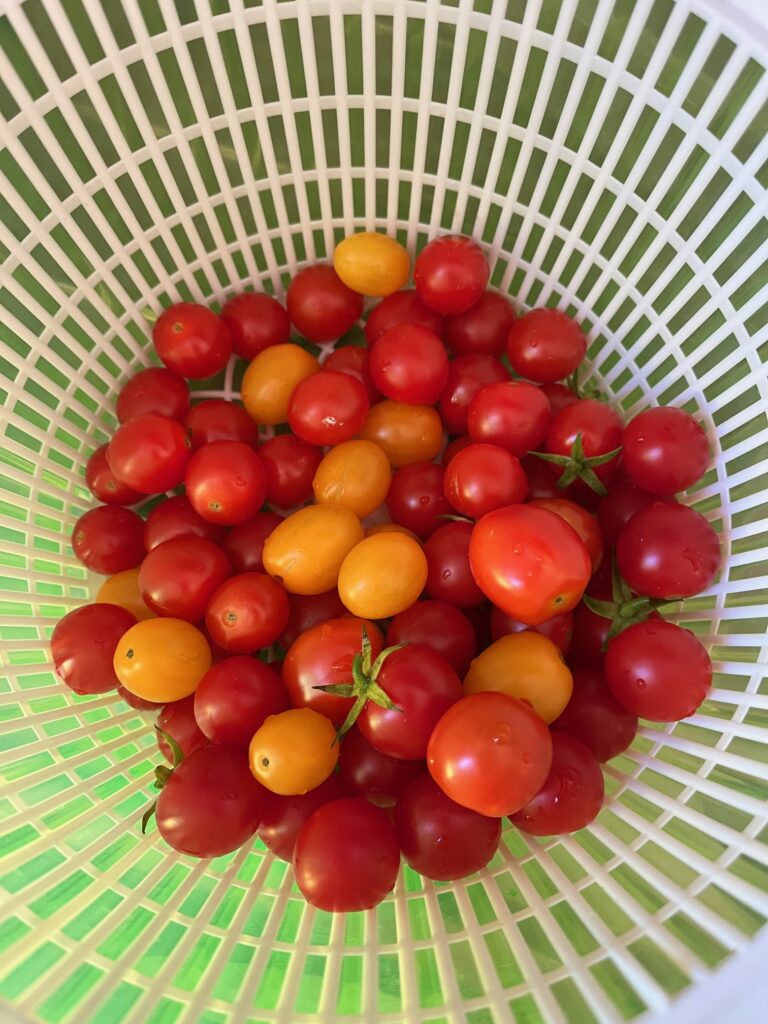
It’s especially around this time of the year when you remember how the supermarket is probably the last place you should be going for most of your locally seasonal produce. “KM 0” is the homemade sign that you’ll often see posted on the side of a room near a farmstand. It means that you are at the zero kilometer mark for where the crops are grown. Or you see the yellow and green “Coldiretti” flags telling you to pull over (their website, as well, has many headlines pronouncing the ill-effects of the sustained heat: “scorched” fruit and vegetables). Especially with the effects of the heat, you gain an ever greater appreciation for what is able to be grown. How this will end up impacting the economy and the livelihoods of many growers will remain to be seen. And there’s that adult concern creeping back in.
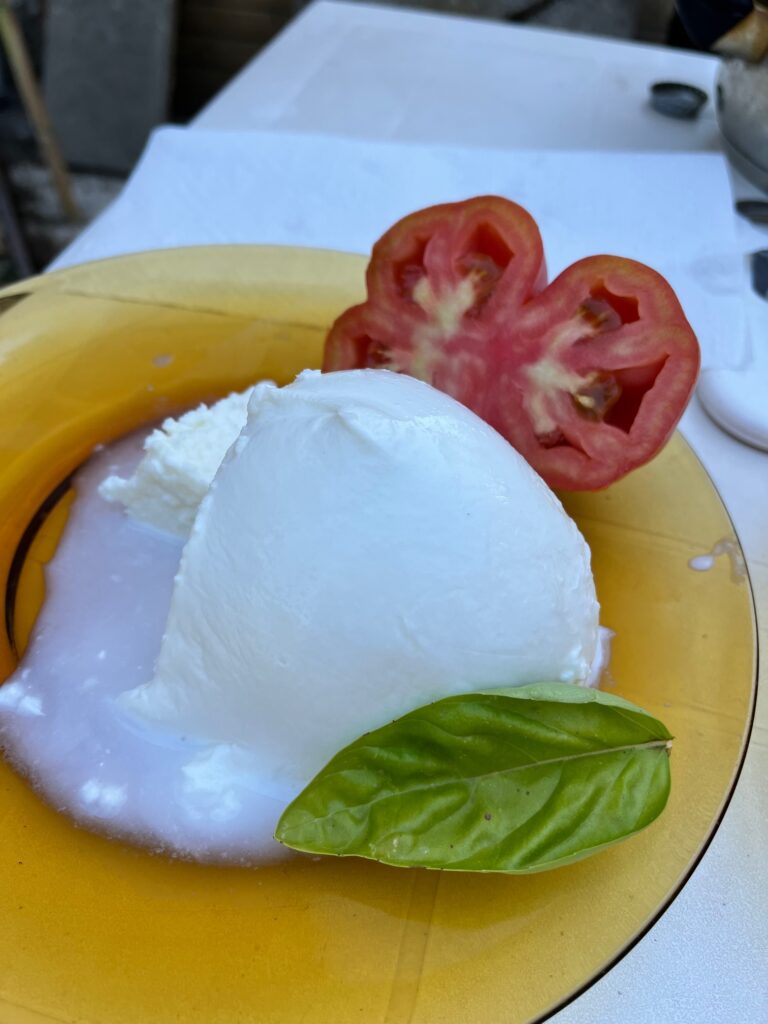
So with the world on fire (I acknowledge that the problem spans beyond Europe and America), I take a few moments to appreciate the modest tomato. The things that you can pair with it to create a sort of tricolor of this country and everything that it is deservedly known for: the food, the resources, the near-effortless growing that you can easily take for granted. But I also think about what a precious resource it is too, and how easily it is threatened. I’ve got no great or hopeful takeaway here, just thinking about what we grow, and how important that really is.